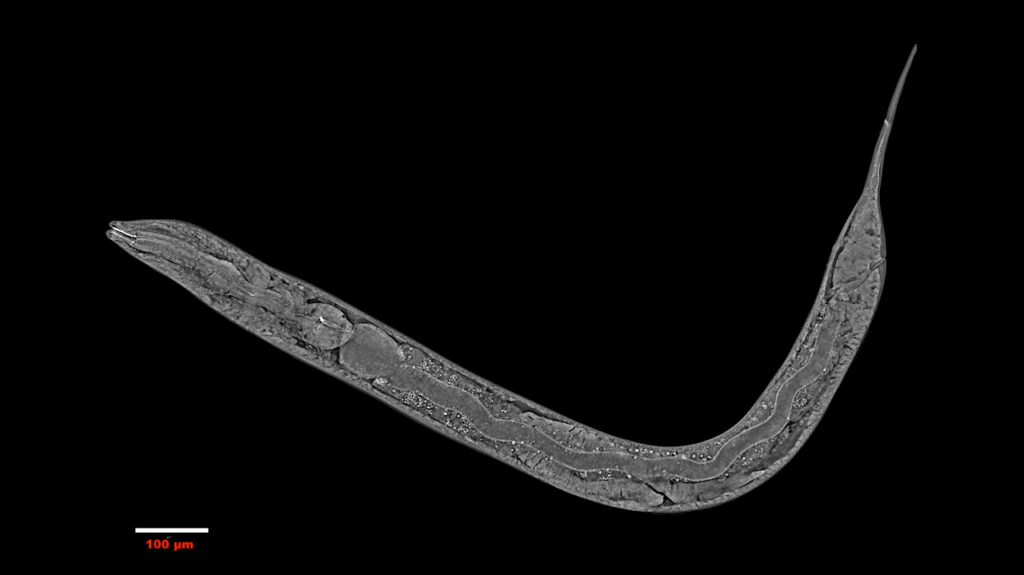Can Organisms Sense via Radio Frequency?

A new project by researchers at the University of California San Diego will investigate a biological mystery that has so far gone unsolved: can organisms use radio frequencies to sense surroundings?
Radio frequency waves (RF) are electromagnetic waves between the frequencies of 3 kilohertz to 300 gigahertz, used in radio, cellphones, wi-fi, radar, GPS, and many other systems. While humans have used RF technology to communicate for over 100 years, no living organism has ever been observed using RF to communicate without technology.
But recently there have been clues that this may in fact occur.
Researchers in Europe were able to demonstrate that biological cells produce RF in the gigahertz range, which is what your radio or your cellphone works at, said UC San Diegos Scripps Institution of Oceanography marine biologist Dimitri Deheyn, the projects lead investigator. Those discoveries were made in cells that are cultured in petri dishes, and so the big question that the RadioBio program wants to assess and that we will try to answer through this grant is: Are such frequencies biologically relevant? Can we measure them from organisms?
Deheyn has been awarded a $3.3 million grant from the federal Defense Advanced Research Projects Agency (DARPA). Team scientists include Scripps researcher Adrianus Kalmijn, UC San Diego electrical engineering Professor Daniel Sievenpiper, and professors Jeffrey Rinehart, an expert in nano- and molecular magnetism, and synthetic biologist Neal Devaraj, both from the Department of Chemistry and Biochemistry within UC San Diegos Division of Physical Sciences.
DARPA funds projects that are high risk, but with high potential. The risk is that no one has ever observed RF activity from a live animal and the concept might prove unobservable. But if Deheyn and his collaborators can detect biologically active RF, the rewards for biology would be huge. In the future, its possible humans could build a cell phone antenna using just molecular units or a soft, biological material such as tissue, researchers said.
Its a difficult problem from both modeling and measurement perspectives, but the biggest challenge will be determining if the electromagnetic effects that we find are purposeful, as opposed to just a side effect of something else, Sievenpiper said. But, he added, if we find that animals, cells, or even smaller structures within cells can interact through electromagnetic waves, that would open up a whole new field of research.
This project is the first step to open the door towards a very new field. It would be a scientific first if we can find situations where the radio frequencies alter behavior of some organisms, or if we can measure RF from them, Deheyn said.
There are a number of unexplained cold cases in biology where organisms show behaviors, morphological changes or coordinations of cellular features that seem inexplicable if one considers only using known forms of communication sight, sound, touch, smell, and ultimately electrical transduction. For example, squids are able to change the texture of their skin to match their environment and thus camouflage their body. But squids are still able to do this even if they have been blinded. So how do they do this? If theyre not using sight, how do they sense the 3-D shape of their surroundings?
Members of Deheyns lab studying bioluminescence in brittle stars have similarly discovered that a brittle stars photocytes (the cells that make them produce light) have cilia hair-like structures all along their cell membrane.
Cilia are good for helping a cell to swim and for helping a cell to react to the dynamism of the surrounding environment, Deheyn said. It doesnt make sense for a cell that is embedded in deep tissue to be ciliated but the photocytes in the brittle star have cilia. Why?
Deheyn thinks its possible that microtubules molecular units that control cilia to make them extend, shrink, or bend form an electromagnetic dipole that is emitting or receiving electromagnetic signals. Essentially, the cells inside brittle stars might be covered in tiny radio antennae.
Investigating this idea will be one of several experiments Deheyn and his collaborators will undertake under the umbrella of the DARPA RadioBio program. They will test organisms into electromagnetically isolated facilities and measure whether they can detect biological RF emissions, and expose them to RF to see if it affects their behavior.
For example, we will be working on exposing brittle stars to electromagnetic fields to see if we can trigger light from those cells just by exposing them to a range of electromagnetic fields, Deheyn said. This would demonstrate that these cells can actually respond to the signal and would be the first evidence that these signals could be biologically relevant, if they respond to a specific frequency.
The experiments will take place in the Electro-Magnetic Research Facility at Scripps, which was developed by co-principal investigator Kalmijn in 1990, with funds from the Keck Foundation and the Office of Naval Research. The facility operates like an underground aquarium in which the electromagnetic field can be precisely controlled. Some measurements will also be done in the laboratory of Sievenpiper, where electromagnetically isolated chambers are used to investigate cell phone antenna technology.
Our research spans a wide range of topics, and this project takes us in yet another new and interesting direction, Sievenpiper said. This is an exciting project because its a chance to tackle a very hard problem that could have profound implications for our understanding of the interaction between organisms and electromagnetic waves. Its particularly interesting because it lies at the intersection of two very different fields biology and electromagnetics which is where many of new discoveries are often found.
If the experiments discover positive results, they will not only uncover and unveil a new mode of communication among organisms, but could also open up new avenues for innovation in RF technology.
Organisms might be able to sense RF using biological material, using molecular units, whereas right now as human beings we can only capture, sense, or record electromagnetic frequencies using these cell phone antennae, Deheyn said. This would be an incredible step towards applications that we cant even foresee right now because this would be so new, and so disruptive in terms of the possibilities that we have. Stay tuned, said Deheyn.
The content of this release does not reflect the views and policy of DARPA or the federal government.








